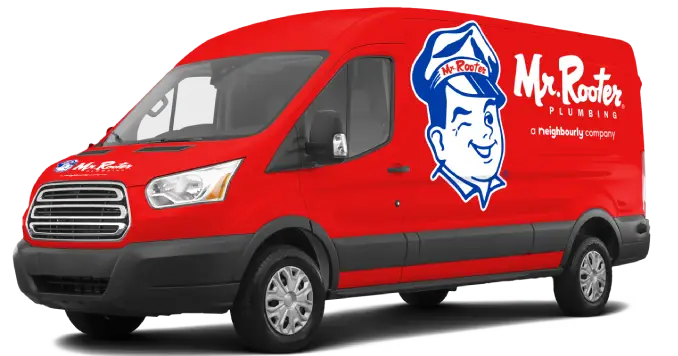When you have a clogged sink, you can kiss proper hygiene goodbye. Dirty water from your dishes or personal care won’t drain, and you’re left with a murky pool of wastewater you’re not sure how to deal with. But yet, deal with it; you must! So how exactly do you go about it? Scoop it out? Dig your hand into the depths to fish out the clog. As you can imagine, some methods are more effective than others. But here, you’ll learn a variety of ways to unclog a sink safely and quickly.
While it’s possible for sinks to be unclogged using DIY methods, it’s important to keep in mind that some causes of clogs, such as tree root invasion and pipe damage, can’t be remedied without proper repairs completed by your Brampton plumber. With that said, there is hope that locals can clear their clogs in a matter of seconds using these tried and true techniques. Before we get into exactly what they are, to understand the unclogging process, it’s important to know what causes clogs in the first place.
What Causes Sinks To Clog in Brampton Homes?
Once you know what causes clogs, it makes preventing them a whole lot easier. Prevention is the best way to ever go through the frustrations of a clogged sink, and our hope is to provide you with the knowledge so that you’ll never have to wonder how to unclog a sink again.
Hair
We shed more hair than we know. Use a drain catcher for a week, and you'll quickly realize that with every shower, hair loss adds up. But a hair clog doesn't just build in your shower; it also builds up in your bathroom sink drain. With enough hair, water, and soap residue, you'll find a pretty pesky clog in your bathroom drain that gets stuck to the walls of your pipe as it goes down. Over time, the clump builds and builds until it becomes an unsurpassable blockage that causes multiple clogged drains. Next time you’re bathing your pet in your sink or casting away hair from your brush, don’t put it down the drain.
Food in the P-trap or Garbage Disposal
If you’ve never heard of a P-trap before, it’s the curved drain under your sink that traps sewer gases so they don’t rise up out of the drain and back into your house. Because of its curvature, food and coffee grounds can get trapped and collect over time, rotting and turning into a ball of disgusting sludge that blocks water from draining. From bits of food and grease to small objects and pieces of soap, it isn’t hard to clog your P-trap, but you may need some assistance properly cleaning it.
Alternatively, your garbage disposal might be clogged and restricting the proper flow in your drain lines. Remember to disconnect the unit first before you investigate it. Use tongs, pliers, or the back of a wooden spoon, to dislodge any visible debris.
Damaged Pipes
Pipes can become damaged for all kinds of reasons. From corrosion and rust to dents and mineral deposits, if there is enough of an issue that builds up over time, you may experience constricted water flow in your pipes. With enough damage, they could even block the flow of water completely. Pipe joints can sag with time, too, partially blocking water flow. This issue is hard to prevent and can happen even if you are incredibly careful about what goes down your pipes. Households experiencing this issue may need repairs or pipe replacements.
Grease
Remember when your mother told you never to put grease down a drain? She wasn't lying. When hot, grease can be liquid, but as it cools, it solidifies, becoming a squishy mass inside your pipes. Because of its soft nature, it collects anything that passes by it, quickly creating a full blockage in your P-trap or pipe. To prevent this from happening, wait for the grease to cool before tossing it in the garbage.
Small Objects
This one is a no-brainer, but you’d be surprised how many different objects make their way down sinks. Including rings, coins, toys, marbles, and more, anything that can fit down a drain might do exactly that if you’re not careful. When cleaning toys in your kitchen sink, be sure that your drain stopper is in. You might also want to use a wash basin to avoid a kitchen sink clog, just in case.
Soap Scum
Soap is supposed to go down the drain, isn't it? Yes and no. While it's impossible for dish soap not to go down a drain, it's not exactly great for your drains either—especially when it comes to stubborn clogs. The nature of soap is relatively sticky, and as you might imagine, it sticks to the sides of your pipes and can create a blockage. Add some hair, debris, or whatever else you wash down your sink, and you have a pretty nasty clog that's hard to remove. Soap can also cause your pipes to corrode, leading to damage and future issues.
How To Unclog A Sink – 5 Easy Solutions Homeowners Can Use
Now that you know the most common causes of clogs, you're probably ready to learn how to get rid of them. Coming up, you'll read five easy ways to unclog a sink, put together by our team of expert plumbers. Remember that these DIY solutions can be quick and effective at the time, but depending on the severity of your issue and the condition of your pipes, a professional fix may be required. Give these solutions a try first before calling in an expert for help.
Try Boiling Water
In the cases of grease, a buildup of soap scum, and food, boiling hot water may be enough to soften the clog to let the water pass through. To carry out this method, you’ll need to boil half a gallon of water over high heat. If your sink is currently full of water, remove it with a wet/dry vacuum if you have one or with a cup if not. When pouring the hot water into your sink drain, be careful not to splash any on yourself. Within a few seconds, your clog should begin to soften to let the water through. If it does not, let the hot water in your sink cool before removing it and repeating the process. Households with PVC pipes should not use this method.
Use a Toilet Plunger
Plungers are normally reserved for clogs in the toilet, but they can also be used in sinks. If your kitchen or bathroom sink is clogged, use the plunger the way you would in the toilet to see if the suction will help release what's stuck. To do this, position the mouth of the plunger over your drain and push it down. It will suction to the bottom of your sink, and the pressure applied when in the downward motion may be enough to push the clog through. Repeat this process several times until the standing water in your sink goes down. While you plunge, you may see bubbles and hear gurgling sounds, this is a sign that it's working. Keep going until all of the water goes down the drain.
Drain Snaking
If you have access to a drain snake, this one tool can be incredibly helpful when unclogging a sink. It’s a professional alternative to a wire hanger that plumbers often use to get rid of blockages, so it makes sense that it would be one of the most effective solutions available to homeowners. Drain snaking can be incredibly helpful in bathroom sinks to unclog hair and debris, and while it can also help with grease clogs, it may not be as effective as warm water at completely removing built-up food and fat. Using a drain snake or auger cable may require a bit of skill, and the process can be messy. Essentially, it involves lowering the drain clearing line down your drain to push out the clog. Sometimes, the help of a drill may be required to get the right amount of pressure. When the clog is clear, simply pull up the line and clean it off. Depending on the nature of the sink clog, you may want to finish this process by flushing out your pipes with boiling water.
Dissolve with Baking Soda
Expert plumbers will never recommend the use of chemical drain cleaners, but more natural solutions such as baking soda and white vinegar may help loosen your clog. This method isn’t always guaranteed to work and, if done improperly, can cause a larger clog. However, if you follow these tips, you may be able to clear small clogs in your drains within 15 minutes. To start, pour a cup of baking soda down your drain. Then, a cup of vinegar (white) down your drain. Place a drain cover over the drain opening and wait 15 minutes for this powerful concoction to do its thing. When it’s time, remove the sinkhole cover and pour a half gallon of hot tap water down your drain.
Unclog With a Wet/Dry Vacuum
This is perhaps the most difficult of all DIY solutions to implement and requires a bit of elbow grease. It involves removing your drain trap with a wrench and attaching the wet/dry vacuum hose to the stopper pipe. Then, you’ll connect the other end of the hose to the vacuum. Turn your vacuum to the wet setting, plug your drain with a sink stopper to create a tight seal, and turn on the vacuum. You’ll need to pulse the vacuum on and off a couple of times to encourage the drain clog to move. The clog may be suctioned into your vacuum, but it may get stuck at the end of the drain pipe, so be prepared to remove it by hand.
You might have noticed that the use of chemical drain cleaners is not in these tips for how to unclog a kitchen or bathroom sink. That’s because they can corrode your pipes and prevent plumbing issues in the future, not to mention putting the health and safety of your family at risk.
Wondering How to Unclog a Sink Effectively? Call Mr. Rooter Plumbing of Brampton For Quick, Reliable Service
We hope these five easy solutions for how to unclog a sink take care of your clogged drain quickly. However, we know that clogs can happen for a wide range of reasons and can’t always be resolved without the intervention of a professional plumber. Plumbing systems can be tricky, and while clearing your clog right away will always seem like the most pressing issue, you may be dealing with a larger problem that needs expert attention.
If your clog doesn't clear or you'd rather get help from a pro, our dedicated team at Mr. Rooter Plumbing of Brampton is here to help with drain cleaning, inspections, and repairs. Call us today!

